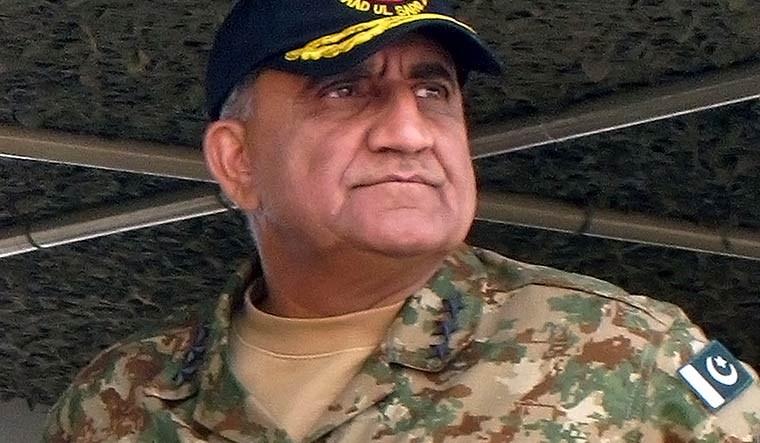In his keynote address to a select audience on April 2 at the recently held Islamabad Security Dialogue (ISD), Pakistan’s Chief of Army Staff Qamar Javed Bajwa said that while modernising the Pakistani military, Pakistan’s emphasis will be on geoeconomics: development and connectivity, and peace with neighbours, especially India.
Bajwa said: “Pakistan will benefit if we improve ties with India. We have wasted 70 years; it is time to move on. Let us sit down and resolve our issues including Kashmir. We want development first. Pakistan is working on north to south (Pakistan to Afghanistan to central Asian republics and Russia) connectivity. We also want east to west (India to Iran) connectivity and trade which will benefit both Pakistan and India.”
In an informal chat a day earlier, Pakistan’s then national security adviser Moeed Yusuf told this writer that Pakistan was willing to discuss the Kashmir resolution under the Musharraf four-point formula, which was being discussed with prime minister Manmohan Singh until 2008 when the Pervez Musharraf regime fell. Two very senior army officers who had accompanied Bajwa to the ISD confirmed to me that the Pakistani army was onboard the Musharraf formula.
Also read
- How Imran Khan may benefit from the crisis in Pakistan
- Masterstroke or civilian coup? Imran Khan’s move divides Pakistan
- Imran Khan being punished for standing up for Pakistan: Former aide
- How Imran Khan transformed from Pak army's yes-man into a rebel
- Shehbaz Sharif, the top choice to replace Imran, steps out of his brother’s shadow
Meanwhile, Bajwa said that as a consequence of a major study done by the Pakistani military, they have decided to reduce the Pakistani army strength of 5.38 lakh troops substantially over the next five years. The money saved would be used for modernisation with focus on firepower and cyber. According to him, a cyber division under a major general rank officer has been raised. The Pakistan air force (PAF) and the navy, too, will have their own cyber capabilities. A cyber organisation will also be created for the protection of civilians. A Pakistani scholar close to the army said that the People’s Liberation Army was helping the Pakistani military with its modernisation to progressively adapt to the changing character of war.
The Pakistani military, like the Indian military, can fight in three war domains: land, air and sea. It wants to develop capabilities to fight in two additional war domains: cyber and electromagnetic spectrum (EMS). The PLA has capability to fight in seven domains: land, air, sea, near-space, outer-space, EMS and cyber. The air domain is up to an altitude of 20km from land surface. The altitude from 20km to 100km is called near-space, beyond which is outer-space.
Development of the EMS domain will be done by the PAF, which will be the lead service in case of future war with India. To accomplish this, the Centre of Artificial Intelligence and Computing (CENTAIC) was set up with PLA support under the PAF in August 2020. With cognitive electronic warfare as its first project, the CENTAIC would be responsible for developing sensor fusion technologies and EMS management. Coupled with the J-10C aircraft acquired from China, the PAF would move away from tactical dogfights to stand-off operations.
Thus, while strengthening its military muscle, the Pakistani army will play the central role in the progress of the nation by optimal utilisation of the China-Pakistan Economic Corridor, which requires peace with India.
Sawhney is editor of FORCE news magazine. His book on artificial intelligence in warfare, titled The Last War: India’s Final Showdown with China, will be released in August.


